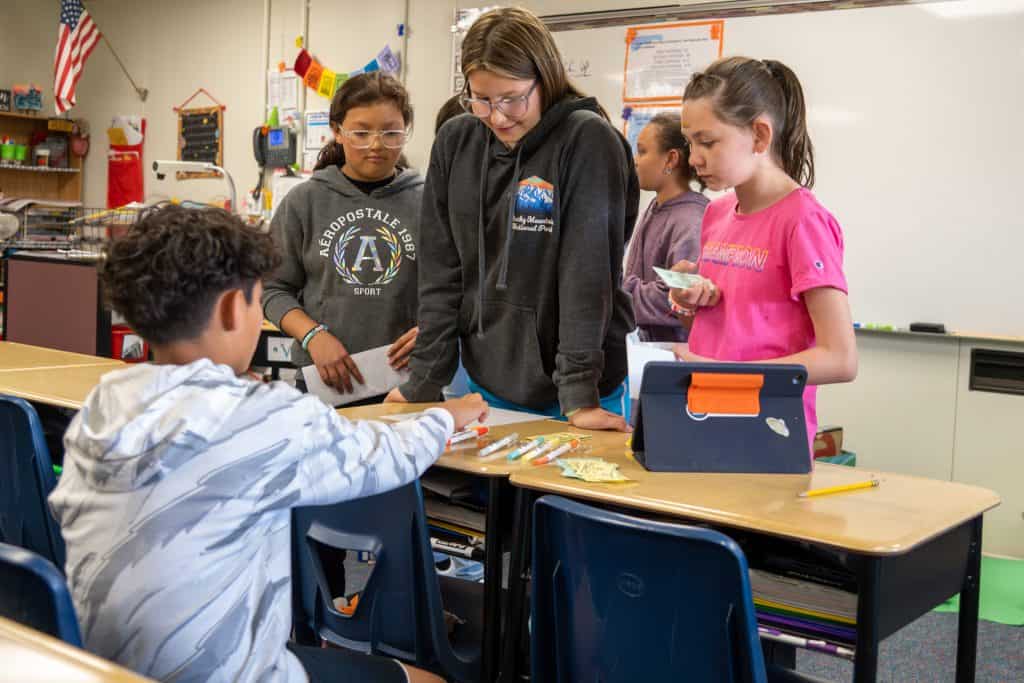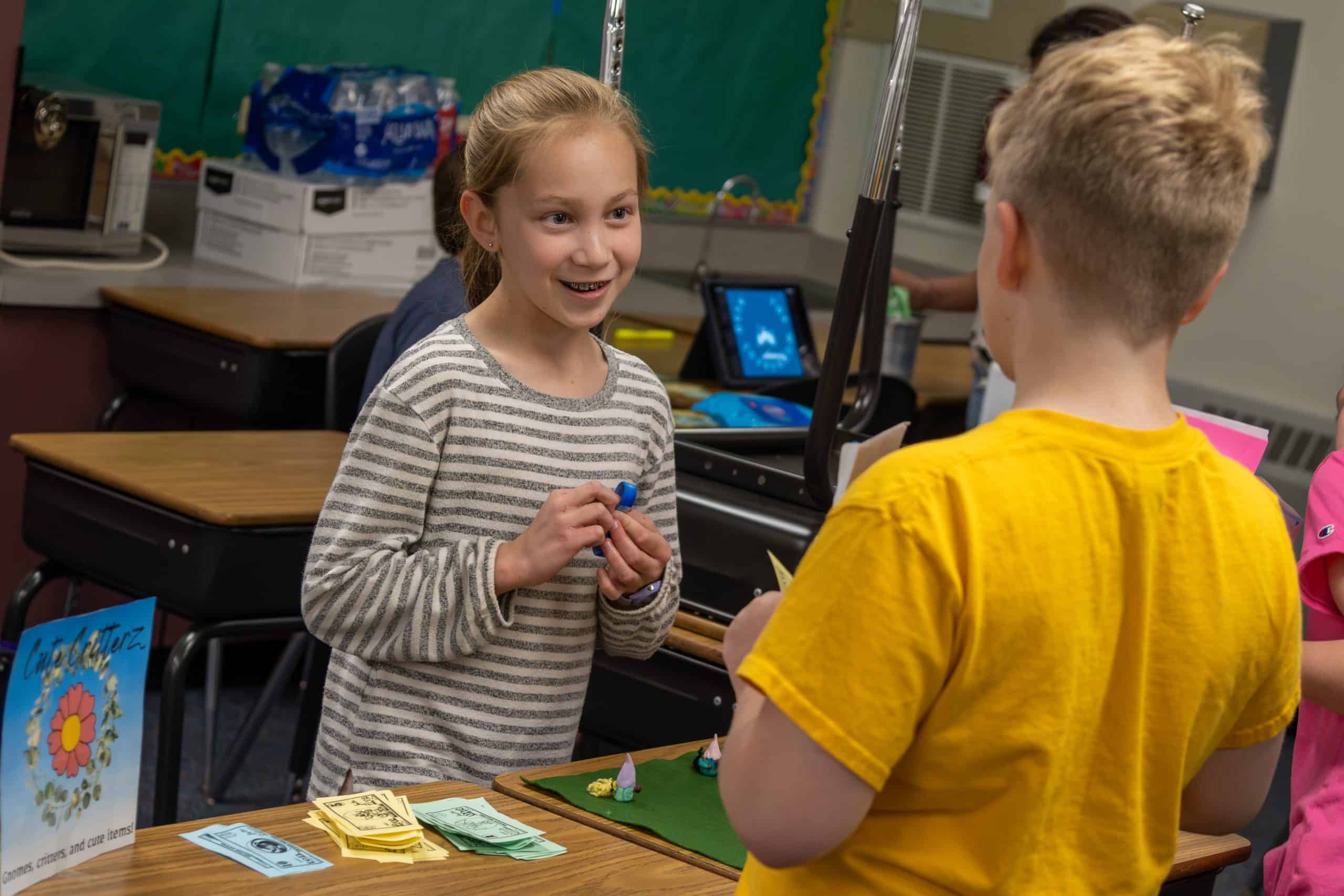Sanborn Elementary’s annual market provided fifth graders in Samantha Benner and Julie Knutson’s classes with a hands-on lesson in real-world finance. For the second consecutive year, students participated in an economics unit where they created businesses and developed products and services for their peers to purchase on two market days. This helped them learn basic economic concepts, such as supply and demand, budgeting, and decision-making.
Students worked in pairs to identify problems within the fifth grade and brainstorm innovative solutions through products or services. From conceptualization to execution, students developed business plans, created logos, designed advertisements, and manufactured their products. “We decided to sell journals so people could write down their thoughts or draw. We also sold squishies because people need ways to help with stress,” shared fifth-grader Aspen Dickerson. Aspen and her business partner also implemented a strategic marketing tactic by offering coupons that allowed students who bought their products at the first market to receive a 30% discount at the second one.
According to Knutson, parents were kept in the loop with a letter explaining the project and their child’s responsibilities. “Students must also turn in a business license, which serves as a permission slip, before they can run their business,” she shared.
Each student received a wallet with $200 in classroom money, and they were expected to manage their own finances. “We explained that they would have weekly expenses, like desk rent, and they’d have the opportunity to gain bonuses or pay fees,” shared Benner. “Students could earn bonuses for exemplary behavior or good grades and had to pay fines for not not completing their homework, running in the halls, or “disturbing the peace” (talking when they shouldn’t be). They also learned how to write checks and keep track of their bank accounts by using a bank register. These skills were practiced weekly, as desk rent must be paid via check.”

The first lessons in the economics unit were on entrepreneurship and the entrepreneurial process. “Students have expenses to pay during the regular school week and have to manage their finances in conjunction with running their own business,” explained Benner. “In class, we talked about banking and budgeting, which are necessary pieces of running a business. Students also have to manage their money in order to be consumers.”
During the markets, the young entrepreneurs transformed their desks and tables into displays that showcased their products, complete with custom signage featuring their business logos and pricing. “We go over expectations for when students are acting as producers and consumers so that everyone is on the same page, and then we let the kids take on the responsibility of running their own business,” said Knutson. “Students used their classroom money to create tills and make change, then split the profits with their partners.”
Following the first market, the fifth-graders assembled to reassess, share successes and failures, review business outcomes, and strategize how to improve for future market days.

